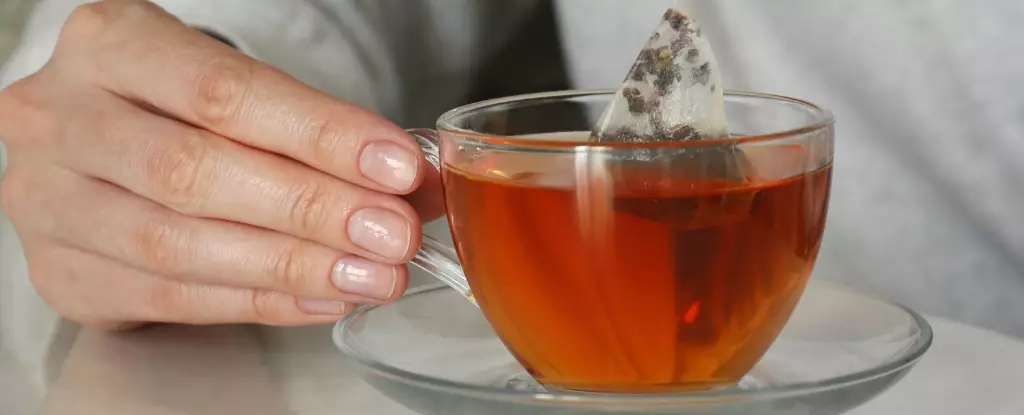For those who may not be intimately familiar with the discourse surrounding microplastics, the findings of a new study conducted by researchers from the Autonomous University of Barcelona could be particularly disturbing. Microplastics—those minuscule plastic fragments that have infiltrated ecosystems and human bodies—are now shown to be present in alarming concentrations even in commonplace items such as tea bags. According to this groundbreaking research, a single tea bag can release billions of micro- and nanoplastic (MNPL) particles into every milliliter of water it infuses. Such staggering numbers highlight a pervasive issue long overshadowed by other environmental concerns. It prompts crucial discussions about the health implications of consuming beverages that we often take for granted as safe.
The study’s methodology involved rigorous testing of various commercially available tea bags, evaluating their plastic content through state-of-the-art laser technology. Researchers examined three distinct types of tea bags: polypropylene, cellulose, and nylon-6. The results were eye-opening. Polypropylene bags released an astonishing average of 1.2 billion microplastic particles per milliliter, whereas cellulose tea bags contributed approximately 135 million particles, and nylon-6 released around 8.18 million particles. These findings underscore a troubling reality: the material composition of our everyday products can significantly influence the environmental and health risks we face.
The impact of these particles isn’t merely theoretical. The research team also studied how the released MNPL particles interacted with human intestinal cells. Notably, they found that the levels of plastics absorbed by mucus-secreting cells were sufficient for these particles to penetrate cell nuclei. This finding raises crucial questions about potential health effects, including possible genetic mutations and long-term cellular damage.
As the research indicates, the polymer composition of MNPLs can lead to varied biological interactions, affecting different organs and tissues in distinct ways. Such variations could result in unique accumulation patterns within the body, potentially leading to diverse health impacts ranging from toxicity to immune dysfunction. The notion that plastics could disrupt normal cellular functions amplifies concerns about rising health issues, particularly inflammatory conditions like inflammatory bowel disease (IBD). This finding completes a grim picture: the very items we consider safe and benign could be contributing to a myriad of health challenges.
While the study primarily focuses on tea bags, the ramifications extend far beyond a single product. With the ongoing proliferation of plastics in food packaging, the call for standardization becomes increasingly urgent. Not only does this research shed light on the existing gaps in our understanding of MNPL contamination, but it also amplifies the need for immediate action both in scientific inquiry and regulatory policy.
Researchers are pushing for heightened awareness and action regarding the potential dangers of microplastics in our daily lives. If we are to foster a safer future, proactive measures must be taken to mitigate plastic use, particularly in food-related applications. Policymakers need to grapple with the multifaceted challenges posed by plastic contamination, establishing regulations aimed at safeguarding public health.
The breadth and depth of microplastics infiltrating not only our ecosystems but also our bodies is a wake-up call that cannot be ignored. This new research serves as a critical reminder of the nuanced and often invisible risk posed by plastics in everyday products. As we navigate an increasingly plastic-laden world, consumer awareness transformed into meaningful action will be integral in addressing this growing crisis. From tea bags to broader food packaging, the push for transparency, safety, and healthier alternatives is not just beneficial—it’s imperative.


Leave a Reply